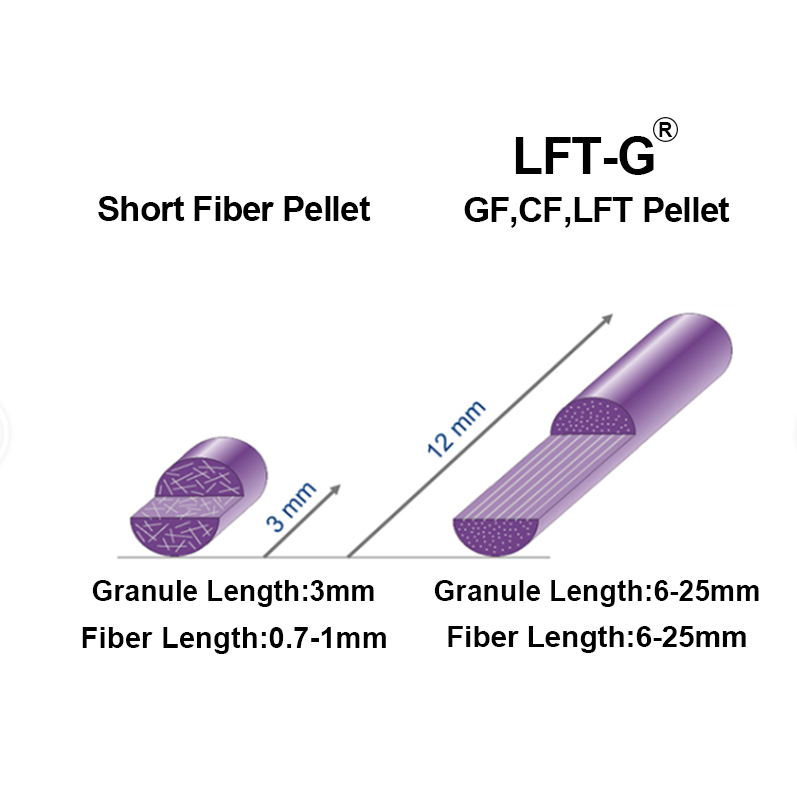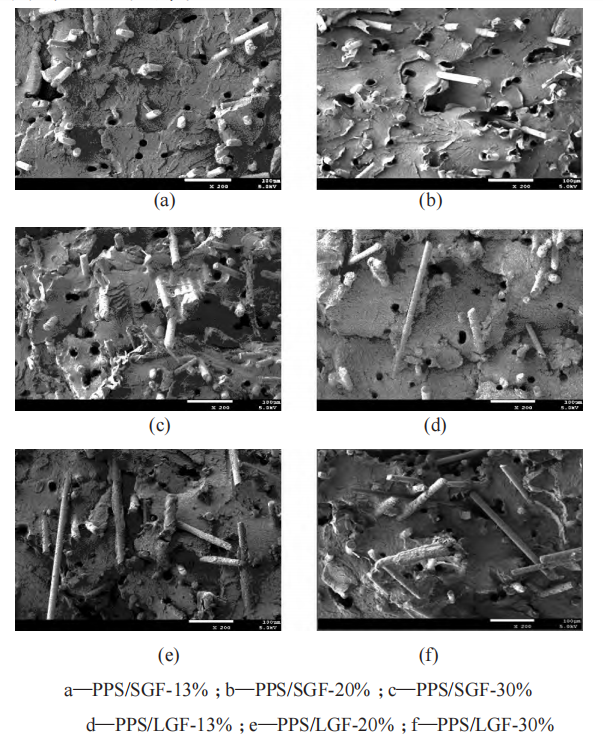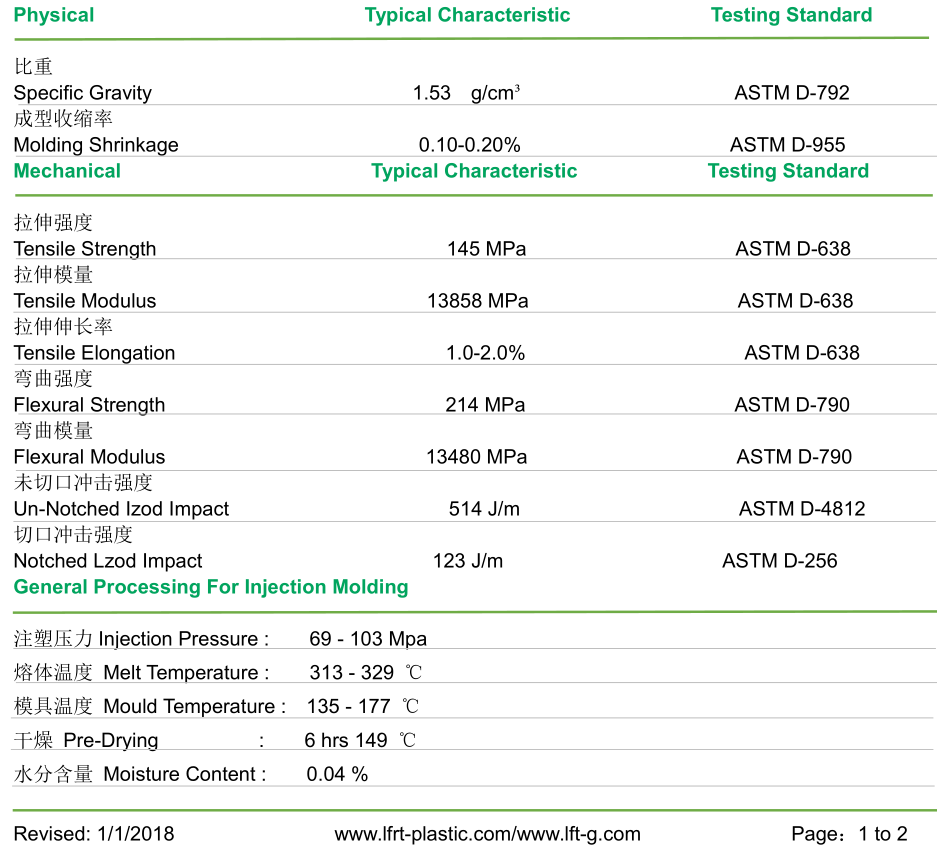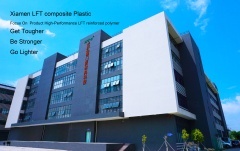предмет номер.:
PPS-NA-LGF40Оплата:
T/T or L/C (other payment ways also can be diпроисхождение продукта:
Xiamen, ChinaЦвет:
Original color (also can be customized)порт доставки:
Xiamen, ChinaPPS information
The resin matrix of thermoplastic composites involves general and special engineering plastics, and PPS is a typical representative of special engineering plastics, commonly known as "plastic gold".
Performance advantages include the following aspects: excellent heat resistance, good mechanical properties, corrosion resistance, self-flame retardant up to UL94 V-0 level. Because PPS has the advantages of the above properties, and compared with other high performance thermoplastic engineering plastics and has the characteristics of easy processing, low cost, so it becomes an excellent resin matrix for manufacturing composite materials.
PPS composite material
PPS filling short glass fiber (SGF) composite material has the advantages of high strength, high heat resistance, flame retardant, easy processing, low cost, and has been applied in automotive, electronics, electrical, machinery, instruments, aviation, aerospace, military and other fields.
PPS filling long glass fiber (LGF) composite material has the advantages of high toughness, low warpage, fatigue resistance, good product appearance and so on. It can be used in water heater impeller, pump shell, joint, valve, chemical pump impeller and shell, cooling water impeller and shell, household appliance parts and so on.
What are the specific differences between short glass fiber (SGF) and long glass fiber (LGF) reinforced PPS composites?

1. Mechanical property analysis
The reinforcement fiber added in the resin matrix can form a supporting skeleton, and the reinforcement fiber can effectively bear the external load when the composite is subjected to external force. At the same time, energy can be absorbed by fracture, deformation and other ways to improve the mechanical properties of resin.
The tensile strength and bending strength of the composites are gradually increased by increasing the amount of glass fiber.
The main reason is that when the glass fiber content increases, more glass fiber in the composite material can withstand the action of external force. Meanwhile, due to the increase in the number of glass fibers, the resin matrix between the glass fibers becomes thinner, which is more conducive to the construction of glass fiber reinforced frame. Therefore, with the increase of glass fiber content, more stress is transferred from resin to glass fiber under external load, which effectively improves the tensile and bending properties of composite materials.
The tensile and bending properties of PPS/LGF composites are higher than those of PPS/SGF composites. When the glass fiber mass fraction is 30%, the tensile strength of PPS/SGF and PPS/LGF composites is 110MPa and 122MPa, respectively. The bending strength was 175MPa and 208MPa, respectively. The flexural elastic modulus were 8GPa and 9GPa, respectively.
The tensile strength, bending strength and bending elastic modulus of PPS/LGF composites are increased by 11.0%, 18.9% and 11.3% compared with PPS/SGF composites, respectively. PPS/LGF composites have higher length retention rate of glass fiber. Under the condition of the same glass fiber content, the composites have stronger load resistance and better mechanical properties.
When the glass fiber content is low, the impact strength of the composite decreases. The main reason is that the lower glass fiber content cannot form a good stress transfer network in the composite material, so that the glass fiber exists in the form of defects under the impact load of the composite material, resulting in the overall impact strength of the composite material is reduced.
With the increase of the glass fiber content, the glass fiber in the composite can form an effective spatial network, and the reinforcement effect is greater than that of the glass fiber tip. Under the action of external load, the external load can be transferred to the reinforced fiber better, thus improving the overall performance of the composite. In the PPS/LGF system, the length of the glass fiber is longer and the spatial network is more dense. The reinforced glass fiber has greater bearing capacity and better impact strength. When the mass fraction of glass fiber is 30%, the impact strength of PPS/LGF is increased by 19.4% from 31kJ/m2 to 37kJ/m2, and the notch impact strength is increased by 54.5%(from 7.7kJ/m2 to 11.9kJ/m2).
2. Thermal properties analysis of PPS/SGF and PPS/LGF composites
When the mass fraction of glass fiber is 30%, the thermal deformation temperature of PPS/SGF composite and PPS/LGF composite reaches 250℃ and 275℃, respectively. The thermal deformation temperature of PPS/LGF composite is 10% higher than that of PPS/SGF composite.
The main reason is that the introduction of glass fiber makes the network skeleton of reinforced fiber formed inside the composite material, which greatly improves the heat resistance of the composite material. The size of glass fiber in PPS/LGF is longer, and the heat resistance improvement advantage is more obvious.
3. Cross section analysis of PPS/SGF and PPS/LGF composites

Видно, что стекловолокно хорошо диспергировано в смоле. С увеличением содержания стекловолокна конструкция сети армированных волокон внутри композиционного материала становится более совершенной. Это также является основной причиной того, что общие механические свойства композитов увеличиваются с увеличением содержания стекловолокна.
По сравнению с композитами PPS/SGF и PPS/LGF коэффициент удерживания стекловолокна у композитов PPS/LGF выше, что также является основной причиной лучших механических свойств композитов PPS/LGF.
Техническая спецификация

О нас

Композитный пластик Xiamen LFT Co., Ltd является фирменной компанией, специализирующейся на LFT и LFRT. Серия длинного стекловолокна (LGF) и серия длинного углеродного волокна (LCF). Термопласт LFT компании можно использовать для литья под давлением и экструзии LFT-G, а также для литья LFT-D. Он может быть изготовлен в соответствии с требованиями заказчика: длина 5 ~ 25 мм. Длинноволокнистые армированные термопласты компании с непрерывной инфильтрацией прошли системную сертификацию ISO9001 и 16949, а продукция получила множество национальных товарных знаков и патентов.